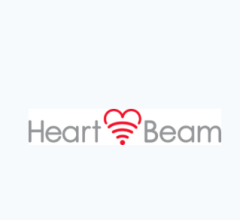
Patient applying a Cardiac Insight Cardea SOLO monitoring device at home.
Improved short-term monitoring methods for patients with stroke risk can increase early detection of atrial fibrillation (AF) and speed interventions like anticoagulation. Without anticoagulation, a person with AF may be up to five times more likely to have an ischemic stroke than someone without AF.[1]
“About 35 percent of atrial fibrillation patients will have a stroke during their lifetime,” said Darshan Godkar M.D., FACC, president and managing partner of Advanced Cardiology and Primary Care LLC in Hackettstown, New Jersey. “Atrial fibrillation patients with certain heart conditions, such as mitral stenosis, myocardial disease, and sick sinus syndrome, are at highest risk for clots. Atrial fibrillation increases with age, doubling each decade after age 55. Hence, early detection of Afib is very important.”
Technological advances to ambulatory EGC monitoring that allow for immediate point-of-care arrhythmia analysis and reporting are positively impacting the diagnostic timeline. These advances can streamline the clinical workflow, eliminate the need for outsourced service providers and reduce the time between monitoring and diagnosis.
Godkar’s practice was recently involved in a case where a 43-year-old woman with a history of hypertension and unexplained shortness of breath reported dyspnea on exertion and a history of unexplained falls. The patient was prescribed a Cardea SOLO wearable ambulatory ECG sensor (Cardiac Insight, Bellevue, Wash.) to assess potential cardiac arrhythmias. After two days of wear time, the sensor recorded 125 episodes of AF with an AF burden of 10.4 percent. The patient’s event diary provided in the report showed a correlation between the onset of the AF episodes and the patient’s symptoms.
Wearable ECG Monitor Offers In-office Reporting
Unlike traditional monitoring methods where a device is sent away for reporting to an outsourced processing center, the Cardea SOLO monitor can be read in the doctor’s office within minutes, with preliminary interpretation available as soon as the information is downloaded. The technician simply connects the Cardea SOLO device to a computer to review ECG data and generate reports using the automated analysis software. This immediate reporting enables providers to quickly begin an AF treatment pathway for the patient. In this patient’s case, that included anticoagulation and loop implantation for long-term AF monitoring.
“After patients return their Cardea SOLO monitor, we are able to give them results within five minutes with an instant download,” Godkar said. “Unlike traditional monitoring devices that have to be mailed in with results back in two to three days, these results are almost instantaneous.”
Because all data is kept in-house on HIPAA compliant computers, and not sent to an outsourced service provider, the patient’s information remains secure and the risk of a data breach is minimized. “We are in control of our own devices,” he said. “We’re not dependent on anyone and no follow ups are needed. We just plug the device in, generate the report and provide instant feedback to the patient.”
The in-clinic automated report not only enables faster diagnosis and treatment, but it also streamlines workflow for staff. Godkar said the staff appreciates how quickly they were able to learn and use the device and software system.
“It’s a very easy-to-use system, and there’s not more than a 5-minute learning curve,” Godkar said. “The staff love it.”
For more case study information about how early detection of AF can expedite stroke prevention intervention — New Onset AF Detected Early by Cardea SOLO, Facilitating Anticoagulation and Reducing Stroke Risk
Editor’s note: Moving Beyond Holter ECG: The Rise in Next Generation Technology is the first in a four-part series about innovative advancements in wearable technology. A Double-Edged Sword: How Over-the-Counter ECG Devices are Impacting Cardiac Care is the second in the series; Cardiac Monitoring in the Time of COVID-19: Next Generation Wearable ECG Technology Comes into Its Own the third in the series; and Increasing Early Detection of Atrial Fibrillation Through Improved Short-Term Monitoring is the final installment of this series.
Related Wearable ECG Monitoring Content:
A Double-Edged Sword: How Over-the-Counter ECG Devices are Impacting Cardiac Care
Moving Beyond Holter ECG: The Rise in Next Generation Technology
How Advances in Wearable Cardiac Monitors Improve the Patient and Clinician Experience
Cardea Solo Wearable ECG Collects High-altitude Cardiac Data on Denali Expedition
Cardiac Insight Partners With VivoSense for Cardiovascular Research
Wearable Cardiac Monitors Are Effective for Tracking Atrial Fibrillation Following Ablation
As Interpretation Criteria Evolve, False Positive Athlete ECG Screening Rates Can Decrease
Reference:
1. The AHSN Network. The AF Toolkit. https://aftoolkit.co.uk/. Date accessed 21 October 2020.


 July 22, 2025
July 22, 2025 



